It’s Sunday . . . shall we step into a church? In Palermo? Just for a quick look-see, some quiet time, and if we’re so inclined perhaps even a prayer, spiritual energy directed toward a loved one or a personal need or goal, an invitation for the universe to manifest. . . whatever we call these impulses we have toward the beyond, the al di là. . .
We were there on a Tuesday. May 3rd, stepping off the noisy Via Maqueda to follow our curiosity about this doorway. . .
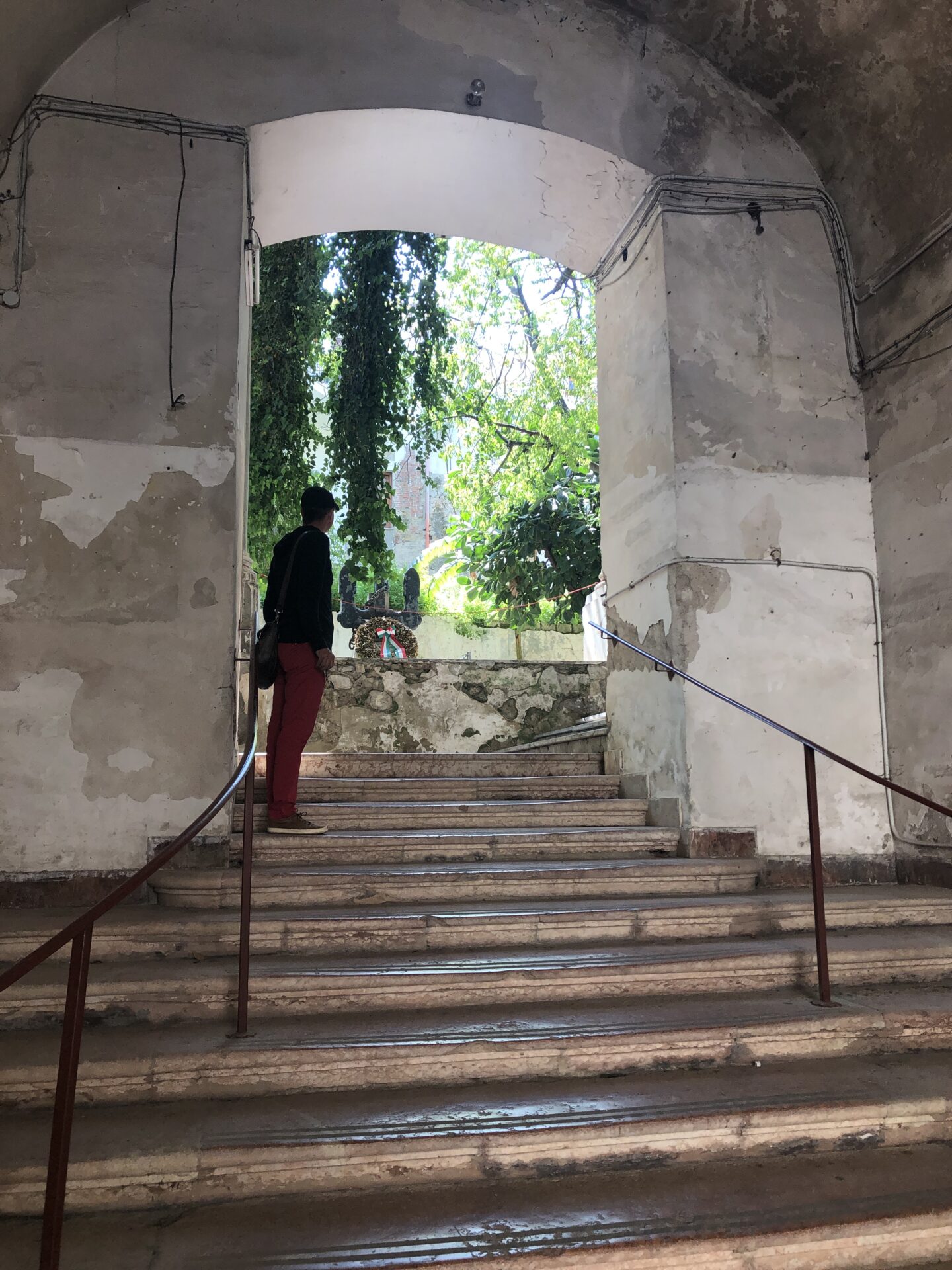
A temptingly verdant courtyard, the cloister of the Church of Santa Ninfa dei Crociferi, Ninfa is a patron saint of Palermo; the Crociferi are the large red crosses worn by the Camillian clerics who minister to the sick, inspiring the red cross now recognized internationally as a sign for medical help).
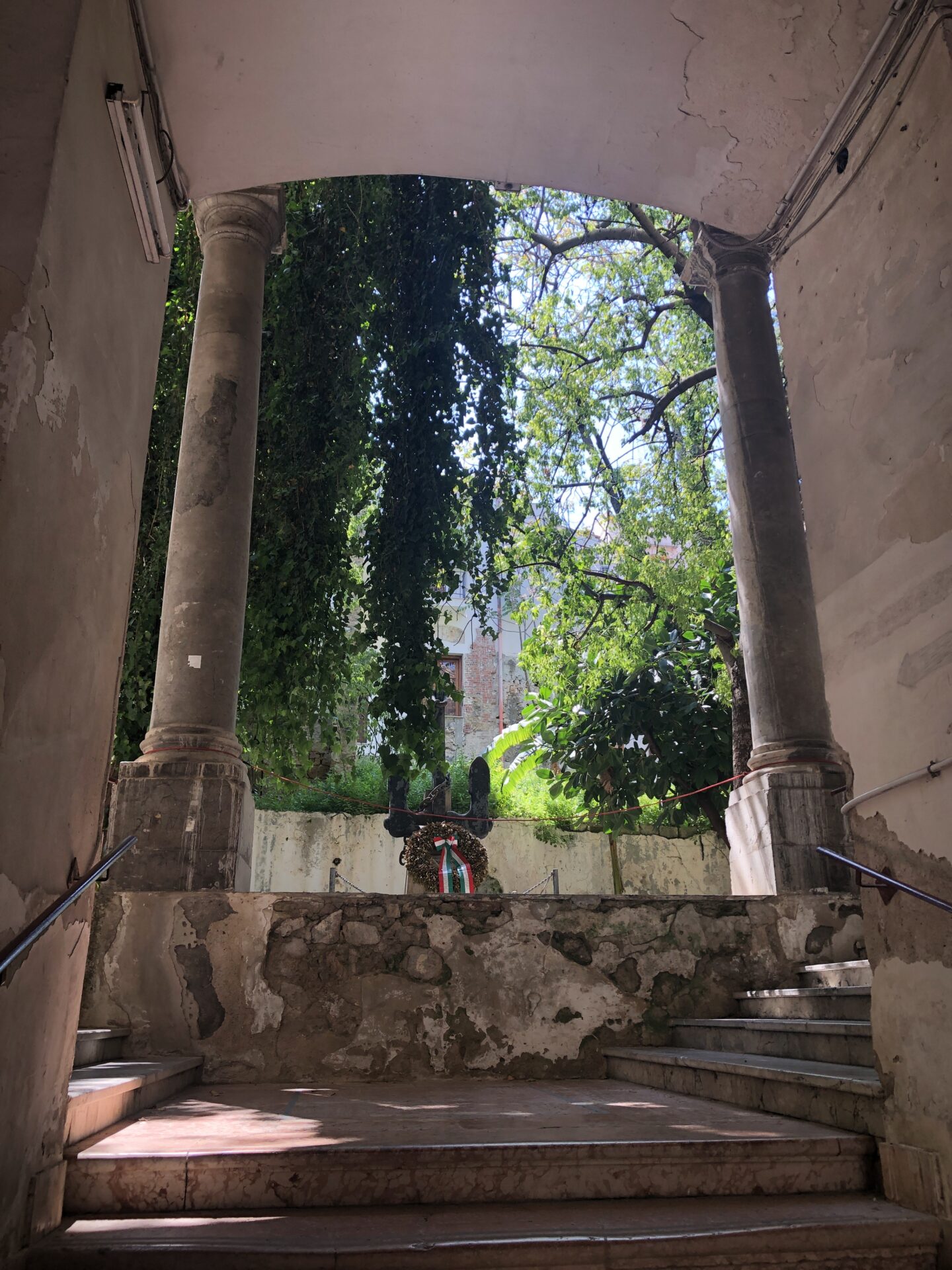
And this cloister led us to the Oratorio della Carita di S. Pietro, a chapel adjacent to the Church of Santa Ninfa. . .
We hesitated only a moment at the (very small, 2 or 3 Euros?) entrance fee, and soon had this beautiful space completely to ourselves. You can read more about the chapel in Italian here and/or in English here. Interesting to know that the English account of the chapel’s original purpose is both more romantic (pirates!) and more restrainedly racist (Saracen) than the Italian: the English is much less wordy, but speaks of ransoming priests kidnapped by Saracen pirates; the Italian is much more expansive about the care given to poor and sick priests and to their oppression by “gli infedeli” — the infidels.
The word, obviously, points to the odious politics and practices associated with the organized religion which churches such as these represent. Knowing this history and being well aware of other ongoing abuses within the Catholic church in general and organized religion in general does temper my admiration or enjoyment of the physical beauty I find in ecclestical architecture. But it doesn’t extinguish it.
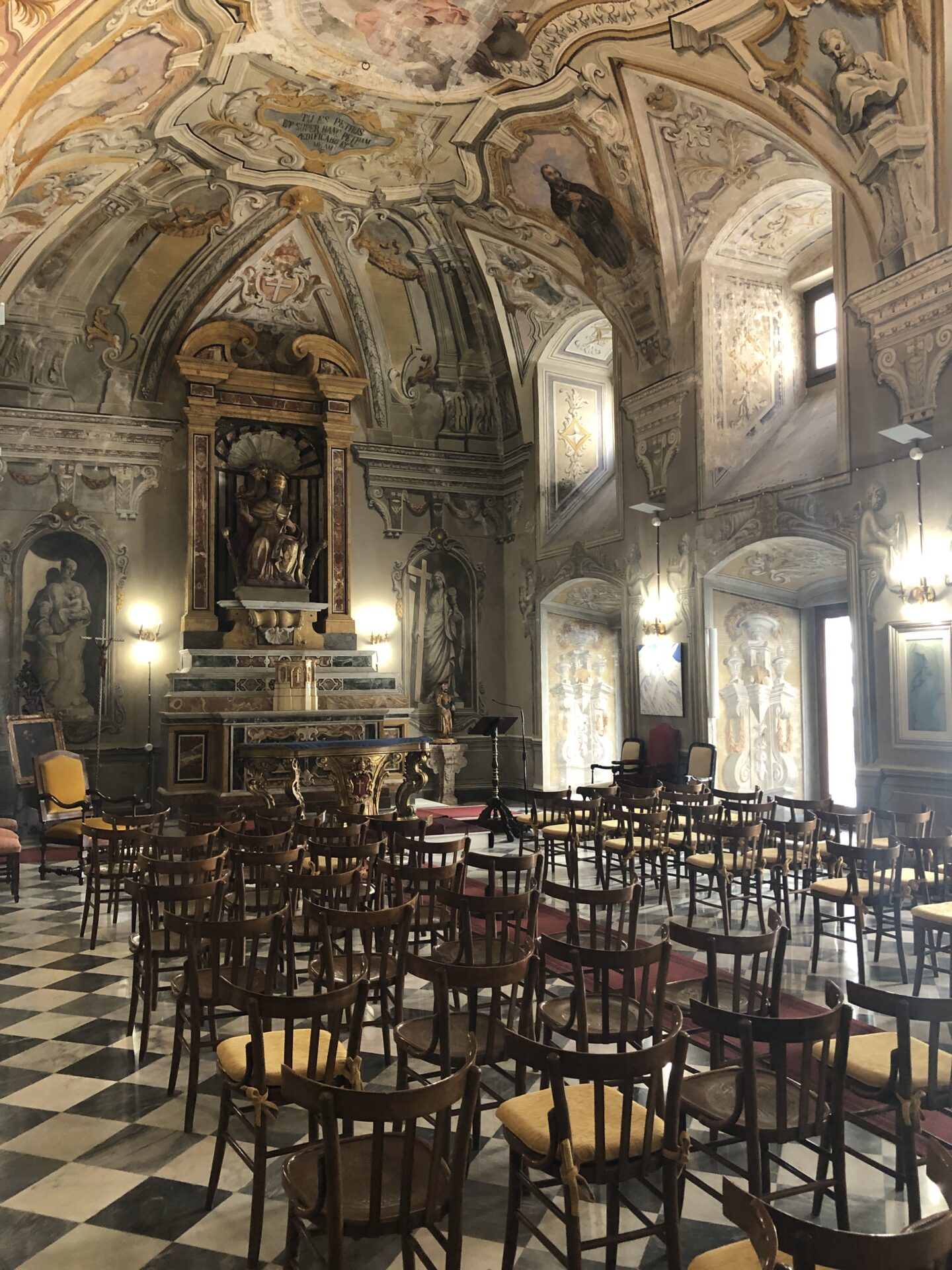
And on that Tuesday in May, on this Sunday in June, I find solace and joy and pleasure in the Baroque architecture, magnificently frescoed ceilings, Rococo decoration everywhere . . .
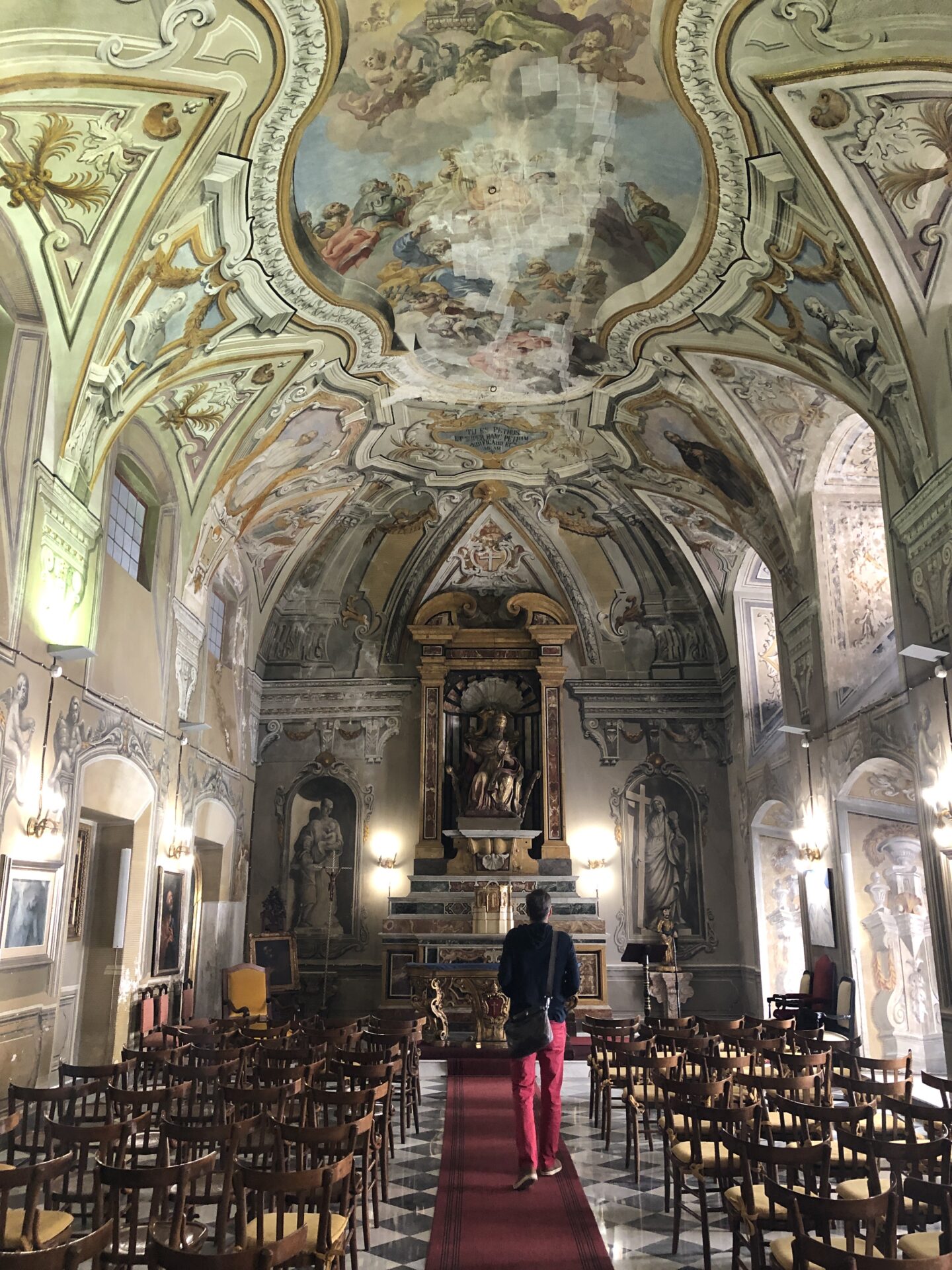
ornamentation that tricked the eye into believing there was even more to the Baroque architecture than was structurally there. Those niches on either side of the altar, for example, the ones with statues. . . More — or would that be less? — than meets the eye. . .
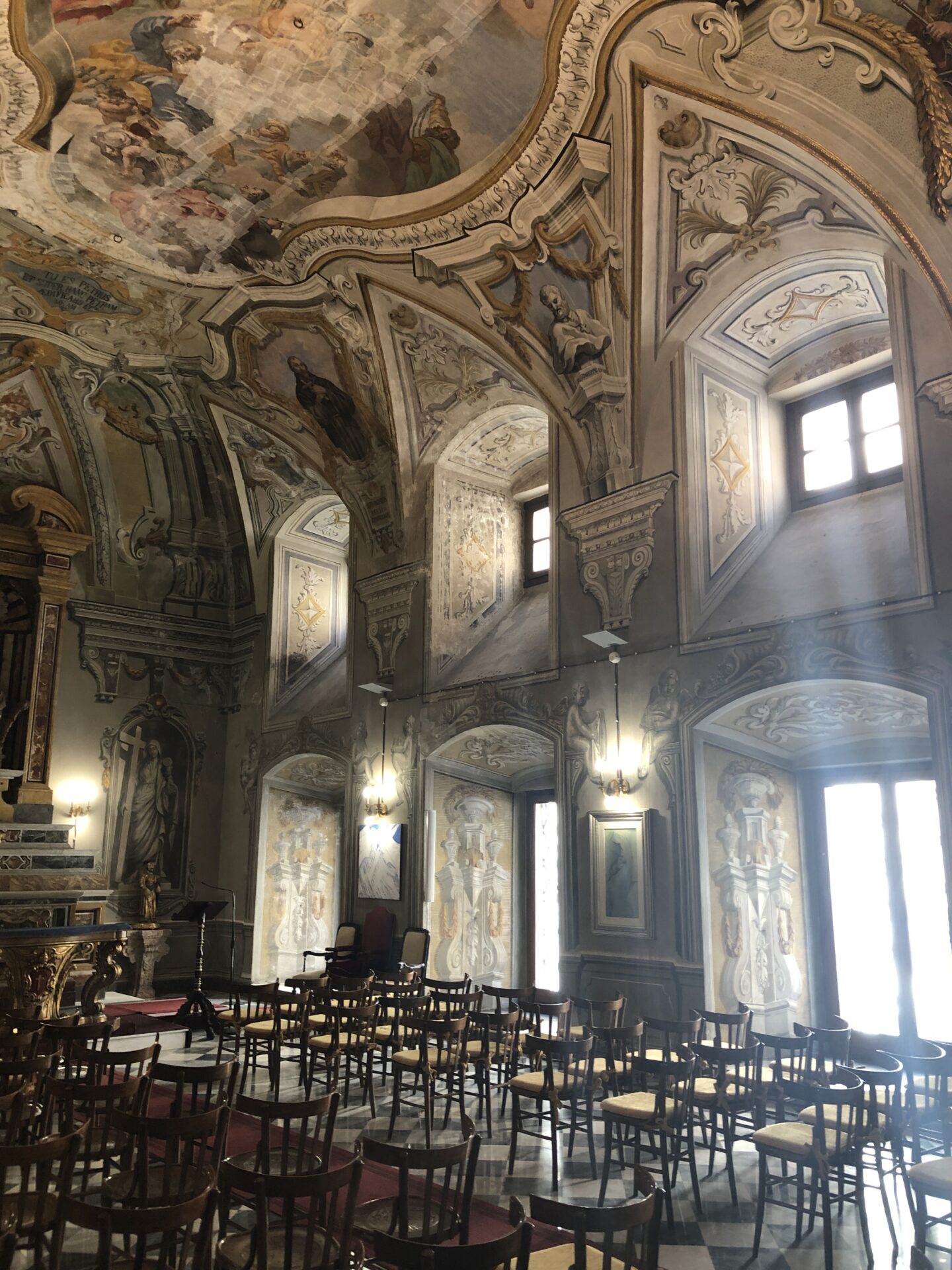
The filtering effect of those windows, on that light. . . In photo-editing software, would we call that filter “Halo”? or “Alleluia”? “Heavenly”?
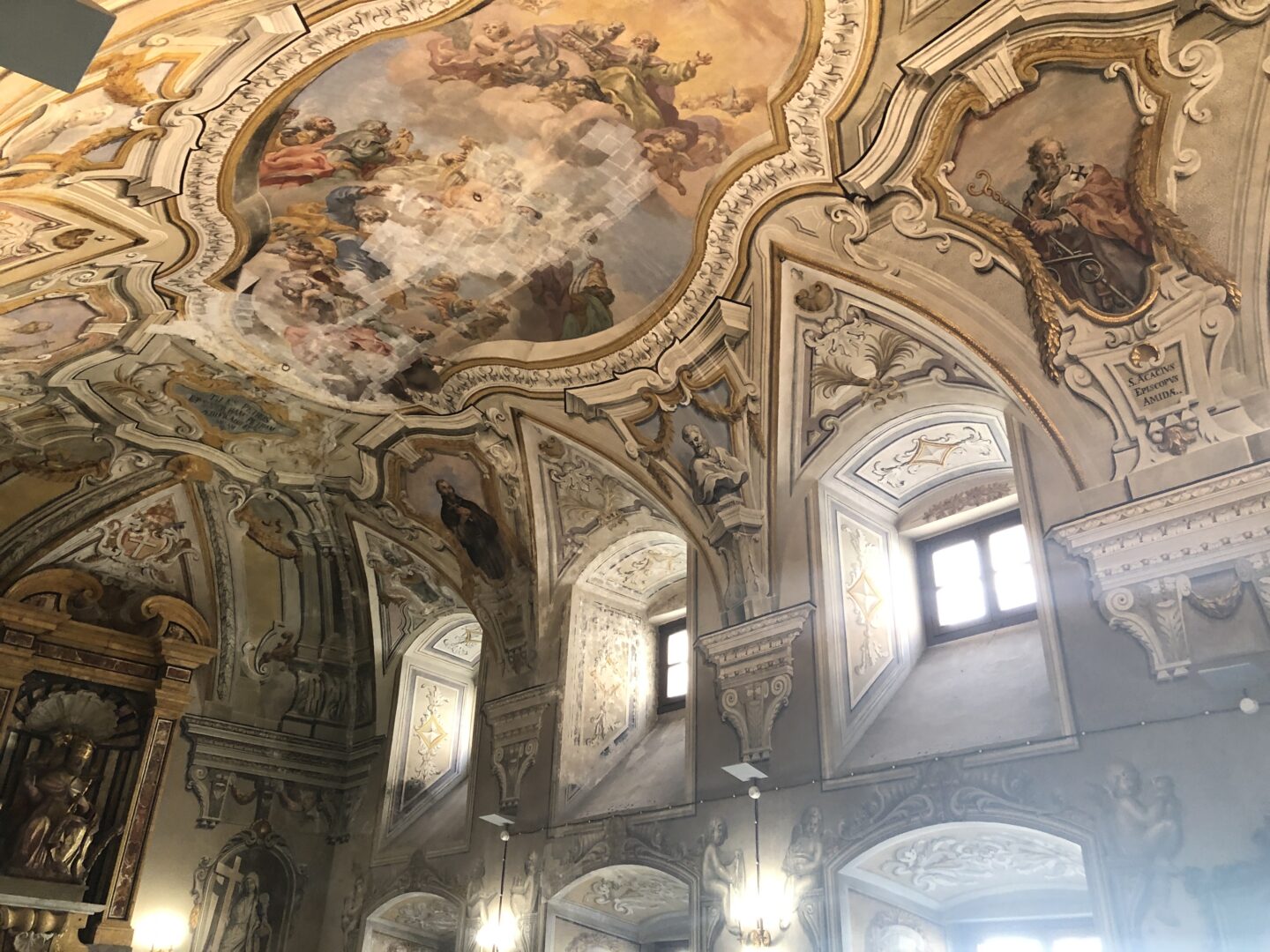
Throw in a few chubby cherubs — trompe l’oeil paintings that resembled carved statues from a distance — from which I chose one to sit and sketch into my little sketchbook. . .
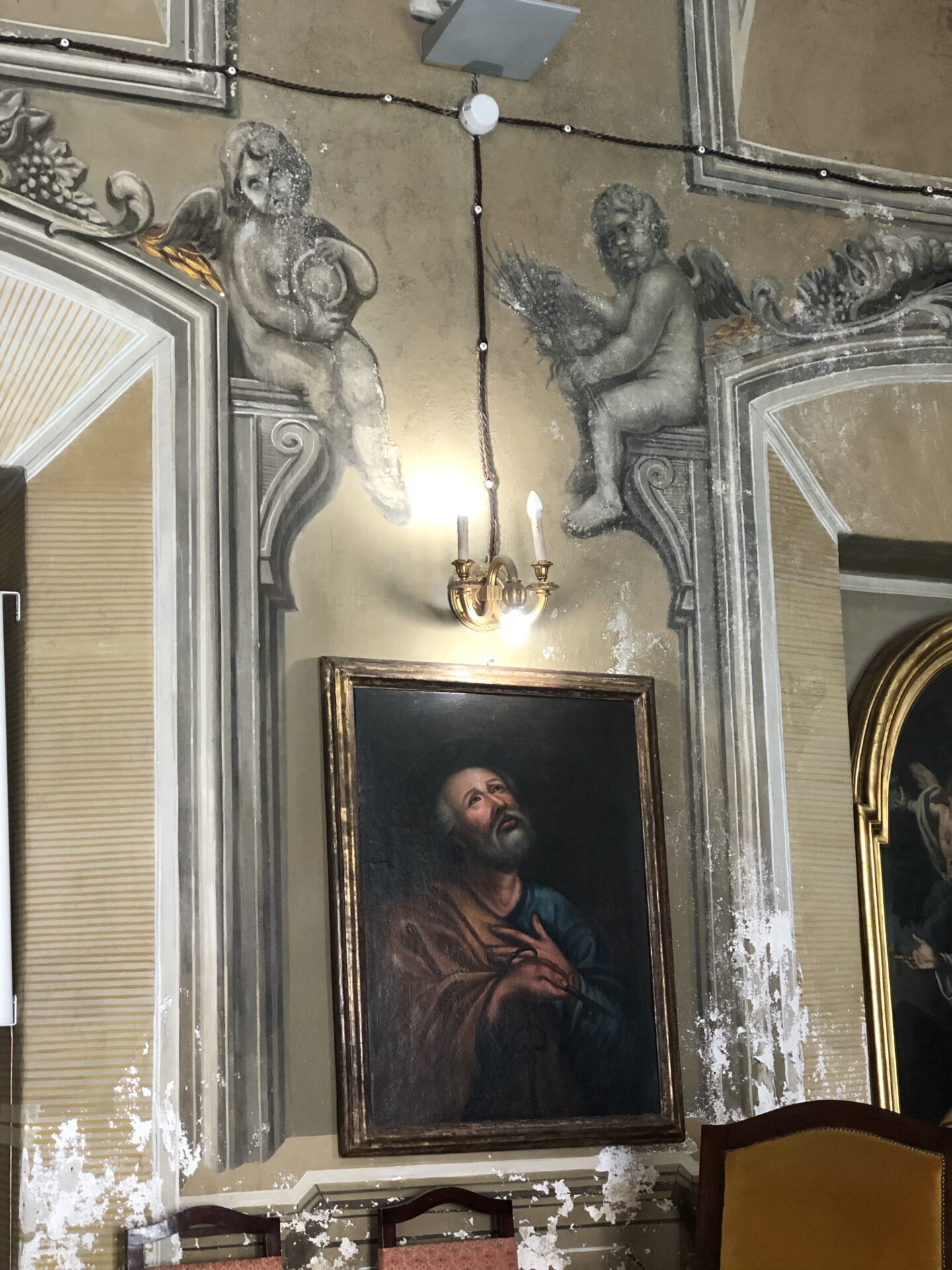
so that on a Sunday five or six weeks later, I can share it with you. . .

While you’re comparing my rendition with the original, I’ll just tiptoe quietly out of the Oratorio. You can stay here as long as you’d like. . . .
Before you leave, feel free to leave me a comment below. I’m always pleased to hear from you.
xo,
f
Beautiful building, Frances. How lovely to have it all to yourselves. We saw amazing churches when we were in Peru, but, like you, our amazement and admiration was limited to the structure and artwork and the skill of the artists and artisans and not for the organization which commissioned the work. The hugely ornate churches inhabiting tiny villages with dirt streets left me a bit cold when I thought of the contrast between the local poverty and the wealth of the church.
Author
I’ve heard about those churches in South America but never seen them for myself, but I can imagine the contrast you speak of being hard to witness. The context in Italy is different, of course, and it’s easier to imagine the local congregation’s life over centuries being enriched by the ecclesiastical art and architecture and finding respite or solace there.
I’m not religious but can still enjoy visiting churches . I like the small plain village churches , especially those with the old fashioned box pews which the Victorians felt the need to do away with – too many shenanigans going on every Sunday ! Baroque architecture weighs me down somehow & feels quite oppressive . Having said that , I can still appreciate the craftsmanship & devotion of the men who spent their lives on this work . I enjoyed our little tour .
Author
Sunday shenanigans, my my! 😉
I know what you mean about Baroque architecture, but its density of ornamentation doesn’t feel oppressive to me (makes me think instead of its musical counterpart, the Bach Preludes and Fugues I used to play). . . As you say, the craftsmanship and devotion of the artisans whose lives are represented in all the carving and painting and tile-laying, etc. can be quite moving to think about.
I’m pleased you enjoyed the tour — thanks for joining me!
So wonderful…and peaceful and calm….
Dottoressa
Author
it really was. . .
This reminds me of being at Gottweig Abbey in Austria a few years ago. There were just a few of us on this particular tour. I might not have even have gone myself but my daughter was so eager. usually there would have been many more but we had this magnificent place largely to ourselves. A cherished memory.
Author
I can imagine that — the spirit of a place is so different when we’re able to experience it crowd-free.
Thank you for the tour! I especially love your sketch and can imagine how much more deeply you’ll remember this moment as a result.
Author
Thanks, Genevieve! It’s true that looking at the sketch now, so much of the moment of sketching comes back to me. . .
The pleasure of stepping from heat and noise into a cool shady space.
How do we translate trompe l’oeil? Trucco l’occhio? Or do we just revert to the French? Sigh. Some things are beyond learning. 🙂
Author
Such a pleasure!
As for the translation, I just did some Googling around the topic, and it seems that Italian art critics use the French term at least as much as we do. But I see that it’s often translated — for Italian readers who might not be familiar with the French phrase — as “inganna l’ochio.” As in this Italian Wikipedia entry:
trompe-l’oeil (“inganna l’occhio”) Rappresentazione ingannevole di oggetti o di spazi, tramite una meticolosa cura naturalistica o artifici prospettici e illusionistici.
I’ll ask my teacher on Saturday if I remember. . .
It is astonishingly beautiful. I can’t imagine being able to visit a place like that, however, without doing as you have done and musing on the layers of history and the way society has or has not changed. Maybe even the way beauty draws you in and causes you or can cause you to lower your filters makes the reflection even deeper. I’m not traveling overseas these days, although I hope to next year, so I love following you. Palermo has been maybe my favorite place you visited, unless it was Croatia, which would be hard to decide.
Author
“May be even the way beauty draws you in and . . . can cause you to lower your filters makes the reflection even deeper.” Yes, I think there’s something about being stopped by beauty so often (even if it’s a faded, crumbling beauty that needs its face washed) . . . Or just about being stopped. . . wondering what it is that’s so arresting initiates a train of thought. And once I’m on board. . .
Palermo is fascinating, different than any other city we’ve visited (closest would be Naples, possibly parts of Marseilles except it’s 30 years since we were there). . . and ah, Croatia, you should go visit Dottoressa!
This is a lovely respite in my harried week (started last week and will continue for a bit). I barely have time to tell you how much I like the filtering and your playful speculation on the filter names. I hope to find a few minutes soon to come back and enjoy this post a little more carefully. I’m taking a deep breath and visualizing the place once more before I run off to my next event.
Author
I’m so pleased to know the post gave you some respite — thanks for squeezing time for a comment out of your busy week. Take care!